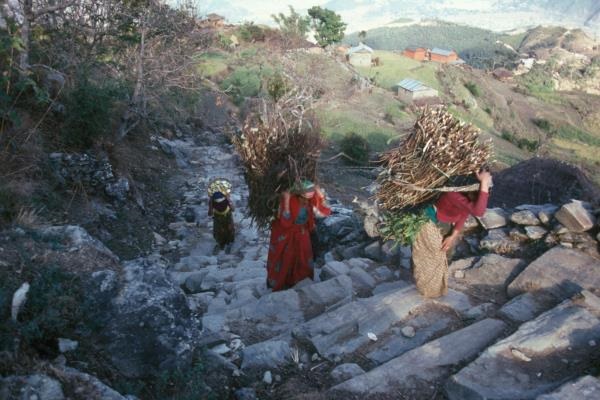FAO calls for increased support for mountain family farming
11 December 2013, Rome - Securing land tenure, providing access to resources for mountain family farms, and improving basic infrastructure in mountain regions are among the key solutions to improving the livelihoods and food security of mountain and lowland communities, FAO said today.
Around 40 percent of mountain populations in developing and transition countries - about 300 million people - are food insecure, with half of them suffering from chronic hunger, according to a new FAO publication, Mountain Farming is Family Farming, launched today to mark the UN's International Mountain Day.
Globally, mountains provide freshwater to half of the world's population, mainly due to the water and soil management practised by millions of mountain farmers. Mountains are also reservoirs of global biodiversity and mountain farmers have been the custodians of this genetic wealth, while providing valuable nutrition for their families for centuries.
"The report comes out at a time when the post-2015 development agenda is being discussed," said Eduardo Rojas-Briales, FAO Assistant Director-General for Forests. "We need to ensure that issues related to sustainable mountain development are adequately reflected in the UN Sustainable Development Goals and the post-2015 development agenda. Raising the profile of mountain farmers and supporting them through an enabling policy environment will benefit both mountain people as well as populations living in lowlands who benefit from their products and services."
Rapid transformation
Today, family farming in mountain regions is undergoing rapid transformation, due to population growth, economic globalization, the spread of urban lifestyles and the migration of men and youth to urban areas. It results in increased workloads for women, higher pressure on local resources and the increased vulnerability of mountain farmers to global changes.
At the same time, these changes can also provide opportunities for local development. For example, mountain people can diversify their income by engaging in non-farm activities such as tourism and the marketing of local handicrafts.
The publication provides case studies from all over the world to show how mountain regions and family farmers benefit from the opportunities presented by these transformations.
"The International Year of Family Farming (IYFF) 2014 presents an opportunity to focus attention on the merits and challenges of family farming in mountain areas," said Rosalaura Romeo, FAO Programme Officer at Forestry Department. "In mountain areas, family farming has for centuries contributed to sustainable development, thanks to its small-scale character and low carbon footprint."
Strategies to support mountain farming
Secure land tenure, empowering of women and public investment in education, health, transport and research are among the key requirements needed to promote sustainable family farming in mountain regions. Improving access to credit is also crucial for mountain farmers.
Policies for mountain family farming should promote regional centres and small towns, which provide alternative employment opportunities in the artisanal, industrial and service sectors, stimulate the local economy and reduce migration.
Sustainable mountain family farming produces ecosystem services that are vital for lowland areas for which farmers should be compensated. Such services include sound watershed management for the provision of freshwater, conservation of biodiversity and attractive cultural landscapes for tourism and recreation.
Organic farming
Creating, labelling and selling quality mountain products derived from organic production is another way for farmers to improve their livelihoods.
For example, in the Indian state of Sikkim, in the Himalayas, 64 percent of the population depends directly dependent on family farming. The government's decision to adopt an organic farming policy in the state made farming more profitable by bringing premium prices for organic products and creating jobs. The government bears the costs of certification and provides free inputs, equipment, training and extension services.
Encouraging collaboration and implementing activities such as farmer associations and cooperatives can help lower the barriers to market access.
